Lahandi Baskoro's Blog, page 17
September 17, 2019
Biomass boiler for cooling
The purpose of the air preheater at the end of the biomass boiler is to restore the heat of the flue gas. The temperature is reduced when the gas is sent to the chimney, which simplifies the design of the pipe. It also controls the temperature of the gas. Generally the position of the air preheater at its tail is at its bottom.

The straight tube package is located at the outlet pipe, and the end of each glass tube is open outside the pipe. There is a hot gas passing around it inside the pipe. One of the air blowers allows air to enter the other end of the pipe, which is burned by its pipes. In this design, the air preheater sleeve at the end of the entire boiler supports the pipe expansion joint itself.
The dust collector inside it is used to recover the granular solid or powder, remove the pollutants, and discharge the exhaust gas before. Dust removal is a process of encountering dust during collection. The dust collector inside it can be used for unit construction or for separating the air of particulate matter. It is commonly used as an air pollution control device to maintain or improve air quality.
September 15, 2019
Reasons for black smoke in biomass boilers
Biomass pellets, bituminous coal, and wood fuels, unlike untreated anthracite, have a high fixed carbon content and low volatile yields. Good quality biomass particles have the same thing as anthracite, that is, they are both high in density and high in hardness, but on volatiles and fixed carbon, biomass wood chips are pressed with wood, with less carbon content and more volatiles.
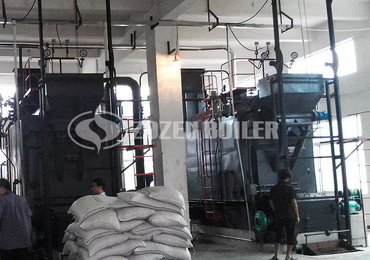
The biomass pellet fuel has high purity and does not contain other impurities that do not generate heat. The carbon content is 75-85%, the ash content is 3-6%, and the water content is 1-3%.
When the biomass pellet fuel is ignited, the particles are slowly carbonized and incompletely burned, producing water vapor, carbon monoxide, carbon dioxide, and other flue gases mixed with hydrocarbons and nitrogen oxides. These flue gases are formed by blasting and phoenix action. After the boiler flue and chimney are discharged into the atmosphere, we will see the boiler emit black smoke.
When the biomass particles in the boiler are completely burned, the temperature in the furnace is as high as 800-1000 degrees or even higher. The volatiles such as water and ash contained in the biomass particles are rapidly carbonized and burned at high temperature, and the combustible carbon such as carbon monoxide is generated. Hydrogen compounds and nitrogen oxides are converted into incombustible gases with oxygen in sufficient time. The impurities in the black smoke have been burned out by high temperatures, so that no black smoke can be seen. That is, everyone says no smoke.
There are many reasons for black smoke in biomass boilers:
1. Biomass pellets have poor quality and contain a lot of impurities;
2. The boiler feeds too fast and the combustion is insufficient;
3. The ash has not been cleaned;
4, the use of time, the pipe is blocked;
5. The chimney installation is unreasonable and the flue resistance is large.
September 11, 2019
Organic heat carrier boiler seal oil leakage
Sealing oil leakage reasons:
1. The seal is damaged and oil leakage occurs.
2. There are problems in the design, processing, installation, use, and storage and transportation, resulting in oil leakage.
3, a variety of leaks caused by poor sealing.
4. Oil leakage caused by poor quality of parts processing.
5. Oil leakage occurs due to improper use and poor environmental conditions.
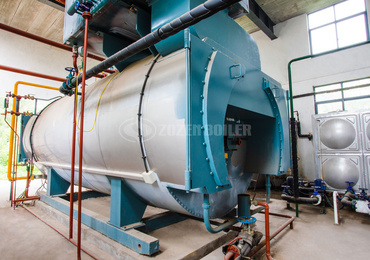
Sealing ring oil leakage prevention method:
1. The gland is not installed accurately, and the oil drain holes on the front cover and the rear cover are blocked.
2. The outer diameter of the sealing ring is too loose at the aperture of the sealing seat.
3. The body direction is reversed, so that the pressure port is connected to the unloading groove, and the pressure is applied to punch out the sealing ring.
4, the oil quality is not clean, the oil is not smooth.
5. If there is a leak, first check whether the heat exchanger oil heater seal is selected and installed accurately, and then check whether the working condition is stable.
September 9, 2019
Biomass boilers maintain a balanced water supply
Biomass boilers should maintain a balanced water supply during normal operation
Biomass boiler adopts automatic controller, full Chinese LCD screen, man-machine interface, users only need to set up easily, boiler can start and stop according to user requirements, load regulation, automatic water supply and other fully automatic operation. The boiler has complete functions, complete protection functions, simple operation, safety and reliability, and self-diagnosis function. When an abnormality occurs in the operation of the boiler, the combustion is automatically interrupted and an audible and visual alarm is issued.
The biomass boiler automatically burns and stops according to controller commands. The stand-alone program controller has multiple safety features, safety and stability, and low maintenance. Steam boiler problem during normal operation
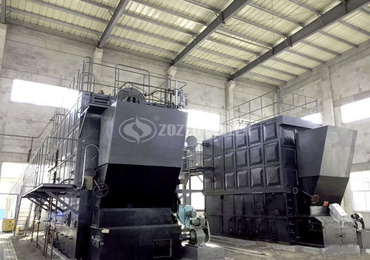
Biomass boilers should maintain a balanced water supply during operation and keep the water level within the normal range as much as possible. Wrong water levels may occur when the load is high. If the load suddenly increases, the water level may rise first and then fall, and when the load suddenly drops, it will first drop and then rise. Therefore, when monitoring and adjusting the water level, pay attention to the judgment of this temporary false water level to avoid misuse.
Two drain valves are mounted in series on the drains of the bottom and lower headers of the drum. One of the boilers and headers is a slowly open valve and the other is a quick opening valve. When discharging sewage, the slow opening valve should be opened first. Gently open the valve and open it, then preheat the pipe. In order to make the sewage discharge better, the valve can be opened and closed multiple times. After the sewage is discharged, close the quick-opening valve, then close the slow-opening valve, open the quick-opening valve, and release the water between the two valves.
Sewage discharge prevention measures: 1 Before the sewage discharge, the boiler water should be adjusted to a higher water level than the normal water level. When draining, the water level should be strictly monitored to prevent the steam boiler from dehydrating due to sewage discharge. After a period of sewage discharge, manually touch the sewage pipe after the sewage valve to check whether the sewage valve leaks. If it feels hot, it indicates that the drain valve is leaking and the cause should be eliminated. 2 According to the principle of “hard work, less row, row”, each class should be discharged at least once. All sewage pipes are drained to prevent boiler water quality from falling and sewage blocking pipes, and even cause water circulation damage and pipe bursting accidents. 3 Sewage should be carried out under low load and normal working pressure. At this time, the pot water is boiled and slack, the slag is easy to precipitate, and the sewage discharge effect is good. 4 Sewage operation should be repeated several times, relying on the impact resistance to stir the slag, and then concentrated discharge, so that the sewage discharge effect is good.
The overall structure and function of the biomass boiler
The overall structure and function of the biomass boiler
The overall structure of a biomass boiler consists of two parts: a boiler, an auxiliary equipment and a safety dosing unit. The main components of the boiler, such as furnaces, drums, burners, water walls, superheaters, economizers, air preheaters, frames and furnace walls, form the core part of the production steam, called the boiler body. The two important components in the boiler body are the hearth and the drum. The furnace, also called the combustion chamber, is the space in which the fuel burns. The combustion of the furnace and the fire bed on which the solid fuel is placed on the furnace is called a stratified furnace, also called a fire bed furnace; liquid, gas or powdered solid fuel is injected into the furnace of the combustion chamber, called a chamber. The combustion furnace, also known as the fire chamber furnace; the coal particles lift the air to burn in a boiling state, and the furnace suitable for burning the inferior fuel is called a boiling furnace, also called a fluidized bed furnace; the air flow is used to rotate the coal particles at a high speed. A strongly burning cylindrical furnace is called a cyclone furnace.

The main function of the boiler drum
The main function of the drum is to store water, separate steam and water, eliminate salt water and sludge in the tank water during operation, and avoid water containing high concentrations of salt and impurities from entering the superheater. Fresh air ventilating fan axial fan. And in the steam turbine.
Boiler drum internal device
These include steam and water separation and steam cleaning devices, water distribution pipes, sewage and dosing equipment. The function of the steam-water separator is to separate the saturated steam from the water wall and water and to minimise the fine water droplets carried in the steam. Baffles and gap baffles commonly used in medium and low pressure boilers are used as coarse separation elements; boilers above medium pressure are widely separated by various types of cyclones and further separated by louvers, stencils or uniform steam plates. Monitoring and protection facilities such as water level gauges and safety valves are also installed on the drum.
September 5, 2019
Thermal oil furnace burst
Once the squib will directly lead to leakage of the heat transfer oil, it will cause the heat transfer oil furnace to blast. In order to guard against the onset of this situation, we need to pay attention to the time of the device. We must select the device company that has experience. The welding time should be carefully and carefully. We can not use the screw to connect the interface. The flange connection should be properly used. data of.
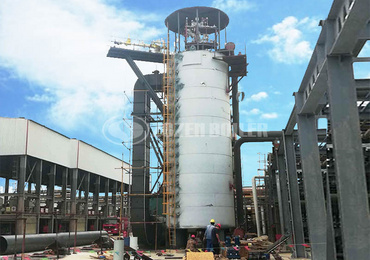
Combined with many years of project experience, the reason why the heat-conducting oil furnace is bursting is: When the quality of the heat-conducting oil in the heat-conducting oil boiler is not pure, the amount of carbon is generally beyond the specification, or there are impurities such as moisture inside, when we conduct heat When the temperature in the oil boiler is too high, the phenomenon of fuel injection or ignition may occur. Perhaps the moisture in the boiler is vaporized due to excessive temperature, resulting in too much pressure in the heat transfer oil boiler and overpressure blasting.
Therefore, our staff must punctually sample and analyze the heat transfer oil we use, timely grasp the quality of the oil, analyze the quality and the cause of the sudden change, and prepare for the cause, and punctuality to the heat transfer oil furnace The amount of heat transfer oil is compensated.
Of course, the heat transfer oil that we add to the heat transfer oil boiler needs to be qualified and dehydrated. If there is any problem with the quality found in this process, we should promptly adopt the corresponding countermeasures to deal with it.
September 4, 2019
Heat transfer oil for heat transfer oil boiler
The heat transfer oil boiler, one of the boilers, is also one of the important products and main keywords of the website. Therefore, we must pay attention to the learning of products, should not be sloppy and lax, and at the same time grasp the relevant knowledge in a timely manner. In order to realize the knowledge of the use of knowledge and the practical use of the work, the use of the product has achieved good results.
1. Is the heat transfer oil in the heat transfer oil boiler important?
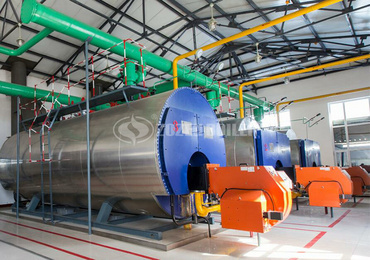
The heat transfer oil in the heat transfer oil boiler is a very important part. If there is a problem with the heat transfer oil, it will affect the normal use and operation of the boiler, thus affecting the use of the boiler. Therefore, it should be noted that it is also necessary to know that the low-temperature heat transfer oil should be dehydrated, otherwise the moisture in the heat transfer oil will cause the boiler pressure to fluctuate, and then the problem arises.
2. Why does the heat transfer oil not flow after the heat transfer oil boiler stops? Can I stop the pump early?
After the heat transfer oil furnace is stopped, the heat transfer oil cannot flow in the heating furnace because if the heat transfer oil does not flow, the heat in the heating furnace will increase the temperature of the heat transfer oil. If the oil exceeds the oil limit, the oil will shorten. The service life will also have an impact on the normal operation of the boiler. In addition, the heat transfer oil furnace cannot stop the pump too early, which deteriorates the heat transfer oil.
3. Are there any precautions for the high temperature tank and oil separator of the heat transfer oil furnace?
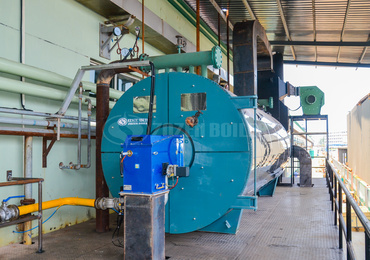
Both parts of the high fuel tank and the oil separator in the heat transfer oil furnace have some precautions. The main reason is that the height of the high tank should not be too low, and the size of the oil separator should not be too small. Otherwise, the temperature of the high tank cannot be lowered, and the heat transfer oil is oxidized, which affects the thermal conductivity of the heat transfer oil furnace. In addition, boiler furnaces may also have coking problems.
4. What standards should be referenced and implemented for the heat transfer oil boiler? Can two heat transfer oil furnaces be used together?
The heat transfer oil furnace that should be referred to and implemented is TSG G0001-2012 “Boiler Safety Technical Supervision Regulations” and SY / T 0524-2008 “Conditional Heating Oil Heating Furnace System Specifications”. In addition, two heat transfer oil furnaces can be used together, usually one at a time. The weld at the pipe joint should have an acceptable quality.
September 3, 2019
How to maintain gas hot water boiler
The gas hot water boiler is a kind of hot water boiler. The gas hot water boiler uses gas (such as natural gas, liquefied petroleum gas, city gas, biogas, etc.) as fuel, and heats the water through the burner to realize heating and provide life and bath. Hot water, the boiler is highly intelligent, fast heating, low noise, and no dust. Gas-fired hot water boilers need regular maintenance and repair, specifically how is it waferized?
Gas hot water boilers are regularly maintained twice a month
Fuel supply pipeline inspection: 1. Light oil filter cleaning; 2. Ignition gas pipeline air tightness inspection; 3. Check whether the pipeline is unblocked; Check each instrument: 1. Water level gauge flushing; 2. Pressure gauge elbow flushing ; safety valve test; check burner: flame detector (electric eye) cleaning the light-receiving surface; 2. check whether the working pressure of the oil pump is normal; 3. check whether the combustion flame is normal; 4. check whether the burner sound is abnormal when burning; Cleaning the cup rotor; 6. Cleaning the water rod; checking the water inlet system: 1. Cleaning the water filter; 2. Whether the pump reaches the rated head and flow rate; 3. Whether the check valve works normally. E. Daily tank drain and clean debris. Water quality test, furnace water test. F. Check if the combustion consumption is normal.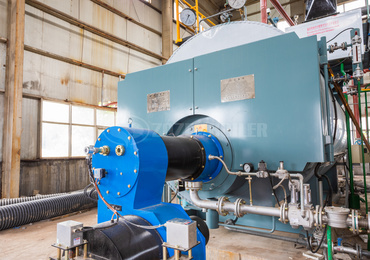
Maintenance project every three months
In addition to the above inspection items, additional inspection items are added:
Electrical parts: 1. Whether the line is loose and aging, failure; 2. Check whether the electrical components are reliable and overloaded; 3. Is the electrical protection device normal; when the soft water tank is deactivated, open the low valve to remove the sludge; : 1. Low water position; 2. Overpressure; 3. Flameout 4. Exhaust gas temperature is too high; Equal smoke detection: including smoke composition analysis and tail smoke temperature detection, check whether the combustion is working properly; cleaning the boiler body and burning The exterior is cleaned.

Annual Dabao project
The main body part of the main body cleans the pipe, the water pipe, the front and rear smoke boxes, the furnace part and the burnout room and the pipe to collect ash. 1. Fully open the cover to check the sealing integrity of the inspection hole, manhole and other inspection holes, and replace the defective gasket in time. 2. Comprehensive inspection of the overall instrument, valve, including the pressure gauge, pressure controller and electrode water level controller detection and safety valve setting; burner part: comprehensive cleaning of the burner cup rotor, ignition device, filter, oil pump, motor And the impeller system, adding lubricant to the damper linkage. The combustion condition is re-examined; the control part repairs and detects the electrical components, controls the line, cleans the control box to collect ash, and each control point performs detection; the water supply system overhauls the water treatment device, checks whether the water quality meets the standard, comprehensively cleans the soft water tank, and checks the feed water pump Operation and lift, cleaning check valve spool, etc.
Circulating water pump for atmospheric pressure hot water boiler heating system
Circulating water pump for atmospheric pressure hot water boiler heating system The atmospheric hot water boiler requires only one thermometer and one water level gauge and does not require a pressure gauge device. Since the boiler is connected to the atmosphere, the pressure in the pot is always atmospheric and there is no danger of explosion. In contrast, pressurized hot water boilers are filled with water and do not need to consider water level control issues. There is a water level control problem in atmospheric hot water boilers. Even if the boiler is full of water and the top is still connected to the unpacking, there is still a water level control problem. The pressurized hot water boiler can supply high temperature and low temperature water. Atmospheric hot water boilers can only supply low temperature water at temperatures below 100 degrees.
The circulating water pump of the heating system of the atmospheric pressure hot water boiler is the return water of the pump system project, and is generally sent to the boiler by the clean water pump. It must not only overcome the cyclical resistance of the system, but also maintain a certain pressure on the boiler to ensure that the boiler water does not evaporate at high temperatures. The circulating water pump of the heating system of the atmospheric hot water boiler is pumped from the boiler. The pump is a hot water pump. Its function is to overcome the resistance of the system, mainly to overcome the resistance of the return water regulating valve.
Regarding the choice of the two, it is necessary to pay attention to the following points. For systems with large scale, long distance and high temperature water supply, pressurized hot water boilers are used. The water supply to the pressurized hot water boiler should be treated with water outside the boiler to achieve boiler water specifications. Depending on the conditions, it can be added (the formulation and purification method used in the boiler should match the water quality of the feed water. When the hardness of the water is too high, it will constitute a large amount of slag to accelerate the scaling. Therefore, it is usually not suitable for high Hardness water quality), but it is necessary to supervise boiler fouling, corrosion and water quality. Its water quality should comply with relevant regulations.
August 29, 2019
How to choose the lift of the steam generator pump
How to choose the lift of the steam generator pump?
First of all, do we need to know the pressure of this steam generator? In general, the pressure is 0.1-0.4MPA and some are 0.7MPA. This is customized according to customer requirements. The pressure is set at the factory and the pressure gauge is not allowed to be replaced at any time after delivery. How to choose the lift of the pump?
Some people mistakenly believe that the elevator is the height of the water. In fact, it is not the pump lift that is about 1.15 to 1.20 times the lift height. If the vertical height of the water source and water is 20 meters, the required lift is about 23 to 24 meters. When selecting the pump, the pump nameplate (ie the iron or aluminum mark on the pump, detailed above) is close to the desired head. In this case, the pump has high efficiency. It will be more economical to use.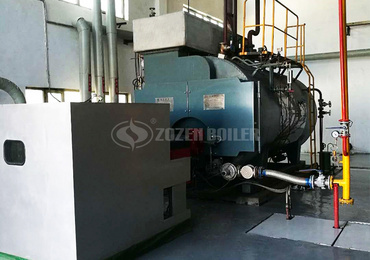
However, it does not require equality. As long as the general deviation does not exceed 20%, the pump *** can work in a more energy-efficient situation. For self-priming pumps, place them in a well ventilated area as much as possible to facilitate rapid heat dissipation and reduce motor temperature. Otherwise, the motor burns easily when it is running for a long time. During non-use, it should be stored during non-use, and the pump should be removed from the water source in time, and the water in the pump should be drained, especially in the cold winter. Then put it in a dry place. Conditional users can also apply grease to critical parts of the pump and add lubricant to the bearings to prevent corrosion.
In addition, the non-use time of the pump is not as long as possible. If it is not used for a long time, it will not only rust easily, but also reduce the service life of the pump.
Lahandi Baskoro's Blog



